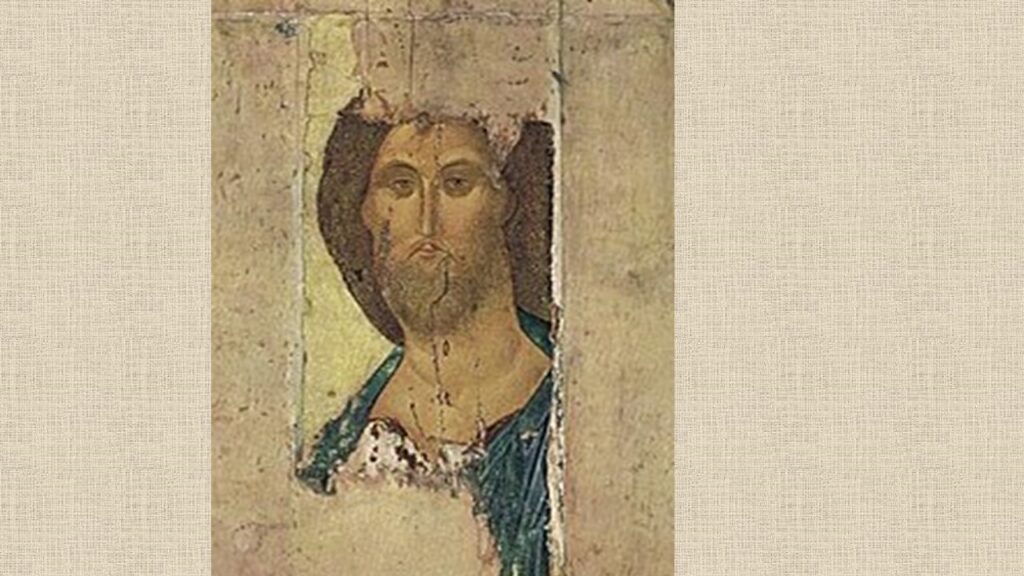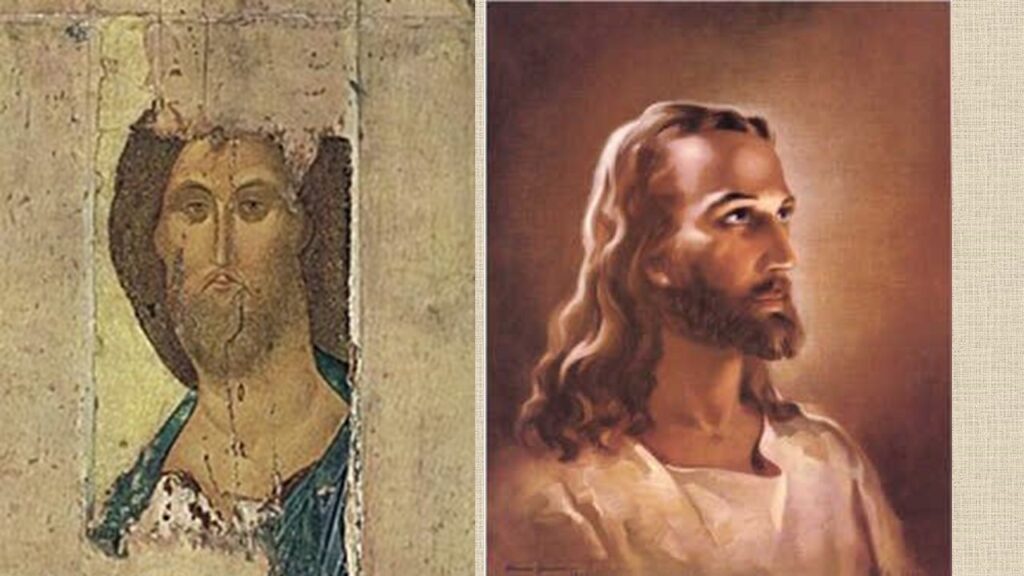REV. DR. ELIZABETH CUNNINGHAM
Stouffville United Church
Psalm 111
Fourth Sunday after Epiphany

If someone stopped you and asked you, ‘Who is Jesus for you?’ what would you say?
Would you say he died for my sins? Would you say he was a teacher, a healer? A shepherd? Someone who performs miracles? Who shared a meal with his friends of bread and wine? Who gave us parables with images to ponder, like the sower and the seed, the lilies in the field, the woman looking for the lost coin? Or the prodigal son, the Good Samaritan?
Would you remember that he overturned the tables in the temple? That he fed the 5000, that he turned water into wine, that he ate meals with prostitutes and tax collectors? That he travelled by foot, or by fishing boat, or even on the back of a donkey? That he was beaten, whipped and hung on a cross to die as a criminal against the state? That on the third day, he rose from the dead, the Risen Christ?
If someone stopped you and asked you, ‘Who is Jesus for you?’ what would you say?
Peter, James and John went up a high mountain with Jesus, walking by the side of a man who had come into their life in a way that had left them breathless, but resolute to follow him. And here, now, he is ‘transfigured before them, and his clothes have become dazzling white, such as no one on earth could bleach them. And there appears to them Elijah and Moses, who are talking with Jesus.” If after they had come back down the mountain and someone had stopped Peter, James and John and asked them, ‘Who is Jesus for you?’ they might not know how to answer that now because to see Jesus transfigured put everything in a whole new light.
If after they had come back down the mountain and someone had stopped Peter, James and John and asked them, ‘Who is Jesus for you?’ they might not know how to answer that now because to see Jesus transfigured put everything in a whole new light.
As a commentary notes: “To be transfigured is to be changed in outward form or appearance. Jesus’ transfiguration does not alter who he is but gives to those who see the changed visage a new understanding of him because they see him outwardly in a different light.”1
Rachel Held Evans wrote, “In scripture, no two people encounter Jesus in exactly the same way.”2 Each one of us has our own answer to who Jesus is for us, and that includes what he looks like, what he said, what parts of his story have become our story. On Christmas Day we celebrate his birth. On Good Friday we remember his death, and then three days later on Easter Sunday we celebrate his resurrection from the dead, offering eternal life to all who believe in him. All of these things are part and parcel of who Jesus is for us. It’s an identity that we’ve put together as long as we’ve called ourselves Christians.
From the 2011 survey of national households in Canada, there were 22,102,7453 people who said they identified as Christian. That’s twenty-two million different and unique relationships with Jesus Christ. And we will each have a different understanding of what Jesus means to us, that is customized to our story, our life.
If someone stopped you and asked you, ‘Who is Jesus for you?’ what would you say?
An icon is a religious painting, typically found as part of Russian orthodox Christianity. I have been looking at an icon of Jesus for a couple of weeks now, as part of a Contemplative Prayer course I’m taking with the Anglican sisters of Saint John the Divine Convent in Toronto. Here is the icon.

Andrew Rublev painted this icon of Christ at the beginning of the fifteenth century for a church in the Russian city of Zvenigorod. It is known as “The Savior of Zvenigorod.” It was discovered in 1918 in a barn near the cathedral in Zvenigorod. Henri Nouwen helped me to understand the icon. “He notes that the shoulders and upper chest are painted at a three quarters angle, while the face, eyes, nose, and lips are set fully facing us. Thus, we see Jesus turning toward us. The longer we pray before the icon, the more deeply we will feel this movement. It seems as if Jesus is moving forward but then notices us, turns toward us, and looks us directly in the face.”4
I have never looked at an icon until last month. Nouwen helped me understand how to approach an icon. “They do not immediately speak to our senses. They do not excite, fascinate, stir our emotions, or stimulate our imagination. At first, they even seem somewhat rigid, lifeless, schematic, and dull. They do not reveal themselves to us at first sight. It is only gradually, after a patient, prayerful presence that they start speaking to us. And as they speak, they speak more to our inner than to our outer senses. They speak to the heart that searches for God.”5
At first, I resisted the icon. He didn’t look like the Jesus I knew. The Jesus of my children’s Bible, the Jesus of European artwork, even the Jesus that is displayed in so many churches in Canada.

Warner Sallman was a freelance illustrator living in Chicago, who in 1940, painted this oil painting of the “Christ”, which many of us now refer to as the ‘White Jesus’ that would go on to sell 500 million copies.6 This is the picture of Christ that many of us have in the back of our minds when we think of Christ. We grew up with it. It’s often displayed in church sanctuaries or parlours. It was the face of rural and urban Christendom during the 20th century. The White Jesus is looking ahead, with determination, as if he knows what lies ahead but is ready to follow God’s leading, even to his death on a cross. He is purposeful, resolute, strong in his gaze that looks past us. There is a glow about him. It is the picture that I think of when I think of Christ.

That was until now. Now I’ve got the Russian icon on my desk. I kept saying to myself, I don’t recognize him. I think subconsciously I’m saying that I don’t ‘see’ the ‘White Jesus’ that is ingrained in my head. And then after looking at this picture for weeks, suddenly, it was if the icon was transfigured before me – because in that moment I saw Jesus differently.
Now I ‘see’ him. He’s like no one I’ve ever seen before.
And maybe that is what Jesus is about – not the known and the tried and the true, but in the mystery, and the unexplained and the unknown. I’ve stopped fighting the fact that I don’t recognize the white Jesus in the icon and instead have just surrendered to what is. Which made me wonder, if this icon changed the way I ‘see’ Jesus, maybe there’s more going on here. Maybe the ‘story’ I carry within me of Jesus is being asked for a retrofit of some kind. Those ‘pre-sets’ have been there for a pretty long time. If the image I carry around of Jesus is changing, maybe my idea of ‘who’ Jesus is, is also changing. Maybe I’m being asked to get closer to the words I might use to say exactly ‘who’ Jesus is for me – if anyone asked.
It isn’t new to anyone listening to this sermon that congregations are shrinking, that churches are closing. Is there anyone out there anymore who will even ask us, ‘Who is Jesus for you?’ There was a time, not too long ago, when we only had to walk out our front door and walk into a world where Christianity was the ‘norm’, where churches were full and babies were baptized and Sunday Schools taught the Good News to hundreds and hundreds of young minds and hearts. Today it’s not there anymore. Today, when we walk out our front door, we walk into a world that hardly knows what Christianity is. We can no longer assume that people know the ‘Jesus’ story, a story that we know very well.
Loraine Shepherd discovered during her research for her just released book, Thriving Churches, that the spiritual attributes of today’s thriving churches are “similar to the qualities found in the early church as described in the New Testament.”7 In the early church, people would have asked, ‘So who is Jesus for you?’ There was a curiosity.
Stuart Murray writes that in post-Christendom, “opportunities to tell an unfamiliar story will multiply; but old patterns and approaches will seriously hinder our ability to respond … the images of fellow travelers and conversation partners must usurp memories of inquisitors and crusaders.”8 We’re no longer in control of the narrative. Fellow travelers and conversation partners – sounds like the place where someone just might ask you, ‘So who is Jesus for you?’
‘So, who is Jesus for you?’
Jesus is my healer.
Jesus is my rock.
Jesus is my confessor.
Jesus is my spirit lover.
Jesus saved my life.
Jesus gives me life,
by listening,
by walking,
by accompanying me in all I do,
today, tomorrow, and always.
This is my Jesus.
Thanks be to God. Amen.
1 Workingpreacher.org, Commentary on Mark 9:2-9, for Feb 14, 2021, by Melinda Quivik. Accessed Feb 11, 2021.
2 Rachel Held Evans, Inspired: Slaying Giants, Walking on Water, and Loving the Bible Again (Nashville: Nelson
Books, 2018), 151.
3 Brian Clarke and Stuart Macdonald, Leaving Christianity: Changing Allegiances in Canada since 1945 (Montreal &
Kingston: McGill-Queen’s University Press, 2017), 7.
4 Henry J.M. Nouwen, Behold the Beauty of the Lord: Praying with Icons (Notre Dame: Ave Maria Press, 2007), 71-
72.
5 Nouwen, Behold the Beauty of the Lord, 24.
6 The man who painted Jesus (theconversation.com), accessed February 13, 2021
7 Loraine Mackenzie Shepherd, Thriving Churches: Urban and Rural Successes (Toronto: United Church Publishing
House, 2021), vi.
8 Stuart Murray, Post-Christendom: Church and Mission in a Strange New World (Eugene: Cascade Books, 2018),
171.
